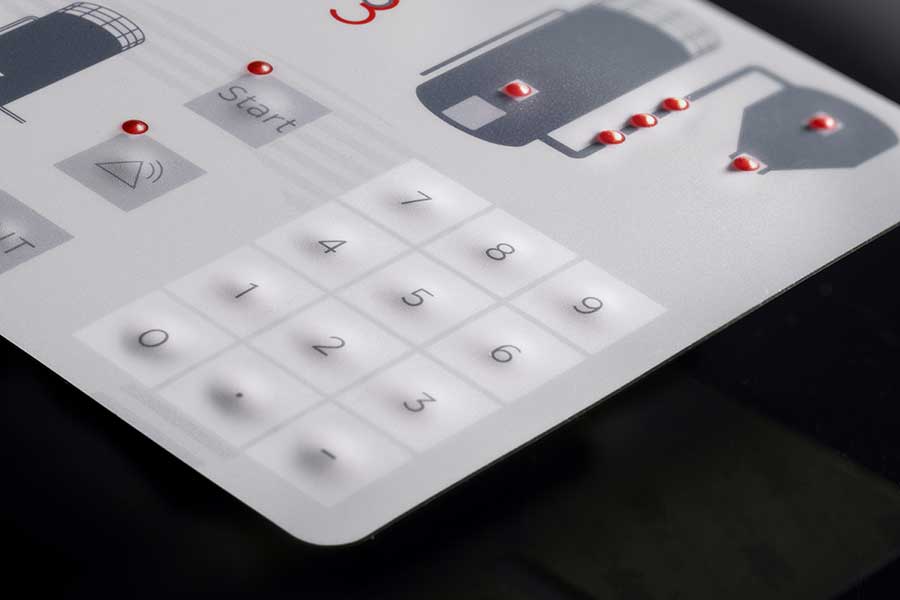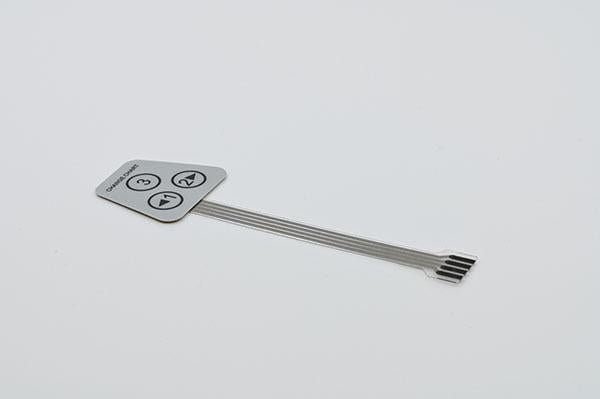The Function of a Membrane Switch in Modern Touch Interfaces and Controls
The Function of a Membrane Switch in Modern Touch Interfaces and Controls
Blog Article
Understanding the Capability of Membrane Layer Changes for User Interface Instruments
The performance of membrane changes stands for a considerable advancement in individual interface design, combining effectiveness with aesthetic adaptability. As industries progressively focus on user experience, comprehending the subtleties of membrane layer switch innovation becomes vital.
What Are Membrane Layer Buttons?
Membrane layer buttons are ingenious user interface devices that help with customer interaction with digital tools. These versatile elements include multiple layers, including a visuals overlay, spacer, and a printed circuit layer. The style enables for a smooth integration into different electronic gadgets, boosting both the visual and useful aspects of interface.
Membrane buttons are commonly employed in a wide variety of applications, from household appliances to industrial equipment and clinical devices. Their building and construction commonly features a slim profile, making them an optimal choice for small layouts. The responsive comments offered by these switches can be crafted to fulfill certain individual preferences, guaranteeing efficient communication between the user and the tool.
Resilience is an additional significant benefit of membrane layer switches, as they are resistant to dirt, dampness, and chemicals, which improves their lifespan sought after atmospheres. Additionally, these switches can be tailored in terms of form, dimension, and graphic layout, enabling branding and user-specific features. Generally, membrane switches over represent a practical remedy for improving customer experience in electronic devices, incorporating performance with visual charm in a reliable way.
Just How Membrane Switches Over Work
Operating on an uncomplicated principle, membrane layer switches use a split building to sign up customer input successfully. Each switch contains numerous layers, including a published circuit layer, a spacer layer, and a leading graphic layer, which are created to collaborate flawlessly. When a user presses the top layer, it presses the spacer layer, bringing the conductive elements of the circuit layer into call with each various other.
This contact produces a shut circuit, signaling the gadget to implement a specific function. The style permits various setups, consisting of responsive feedback, which can improve the customer experience by providing a physical sensation upon activation. The materials made use of in membrane layer buttons typically include adaptable substrates, such as polyester or polycarbonate, which guarantee toughness and resilience against deterioration.

Key Advantages of Membrane Layer Buttons

One more significant benefit is their density. Membrane buttons are thin and lightweight, which makes it possible for producers to save room in their devices without giving up performance. This feature is particularly valuable in applications where weight and volume are crucial considerations.
Furthermore, membrane switches are immune to dust, dampness, and chemicals, improving their toughness. This resilience expands their life expectancy and reduces the need for regular replacements, leading to price savings with time.
Additionally, the tactile responses supplied by membrane layer buttons can be enhanced to boost individual communication. They can include functions such as elevated buttons or distinct clicks, improving functionality and user experience.
Applications Across Industries
Customer interface gadgets making use of membrane buttons are widespread in a broad variety of sectors, showcasing their adaptability and performance. Membrane Switch. In the clinical sector, membrane switches are indispensable to devices such as diagnostic devices and person monitoring systems, where their sturdiness and convenience of cleansing are crucial for maintaining hygiene requirements. In the automobile market, these switches look at here are employed in dashboard controls and infotainment systems, giving a smooth and modern-day interface for customers.
In addition, the consumer electronics sector benefits from membrane layer switches in appliances and portable devices, where compact style and user-friendly interfaces enhance individual experience. Industrial applications also take advantage of membrane changes for control panels in machinery and automation systems, stressing their effectiveness and resistance to rough settings.
In the aerospace and protection markets, membrane buttons are made use of in cabin controls and devices, where reliability and efficiency under severe problems are extremely important. In addition, the video gaming industry increasingly includes membrane layer switches in controllers and gallery makers, contributing to an engaging customer experience. Generally, the adaptability of membrane switches over enables their widespread usage across numerous fields, highlighting their significance in modern-day individual interface design.
Future Patterns in Membrane Switch Over Technology

Additionally, using innovative materials, such as polycarbonate and polyester films, is anticipated to climb, offering improved durability and resistance to ecological stress that site factors. These materials add to the total long life of membrane switches, making them suitable for harsher commercial applications.
In addition, the incorporation of wise innovation, consisting of IoT connectivity, will certainly make it possible for membrane layer buttons to connect with various other tools and systems, promoting a much more interactive user experience. This pattern straightens with the expanding need for smart devices throughout numerous sectors, from healthcare to consumer electronics.
Lastly, modification alternatives are expected to broaden, enabling producers to produce bespoke services tailored to specific user needs and choices. These advancements will position membrane layer buttons as necessary elements in the development of interface technology.
Conclusion
In final thought, membrane changes stand for a critical advancement in individual interface modern technology, providing a trusted and flexible remedy for diverse digital applications. As advancements in product science and touch noticing modern technologies continue, the performance and applicability of membrane switches are anticipated to broaden, reinforcing their relevance in modern digital devices.
Report this page